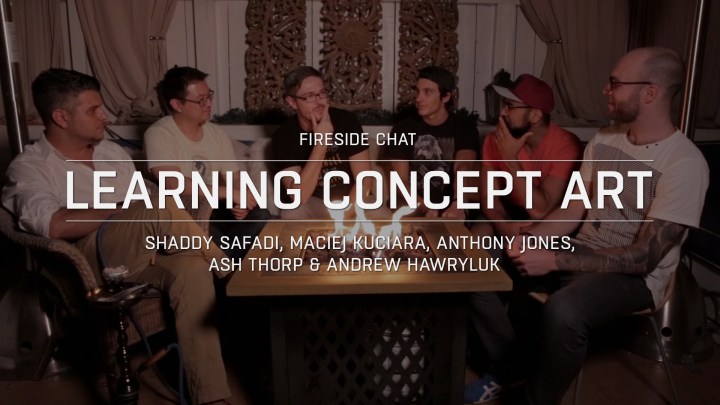Wacom Presents: You’ve Been Promoted – How to Be Your Boss in Your Home Office
WACOM PRESENTS – A Work From Home Series
In a brand-new sponsored series on ArtStation, Wacom is featuring 10 artists who will share their tips and tricks on how they find inspiration and motivation while working from home. Check out ArtStation Magazine weekly to discover new featured artists and get inspired!
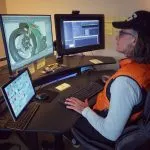 Colie Wertz is a Freelance Concept Artist and CG/VFX veteran with over 20 years of experience. He’s worked for Industrial Light and Magic, The Orphanage, ImageMoversDigital, 3DSystems, and Tippett, to name a few. His latest film contributions include Batman, the Mandalorian, Dune, the Bumblebee Movie, and Rogue One, spanning back to StarWars: Episode 1 – The Phantom Menace. Colie lives in the Bay Area of San Francisco where he’s converted a room in his apartment to an office that suits his needs.
Colie Wertz is a Freelance Concept Artist and CG/VFX veteran with over 20 years of experience. He’s worked for Industrial Light and Magic, The Orphanage, ImageMoversDigital, 3DSystems, and Tippett, to name a few. His latest film contributions include Batman, the Mandalorian, Dune, the Bumblebee Movie, and Rogue One, spanning back to StarWars: Episode 1 – The Phantom Menace. Colie lives in the Bay Area of San Francisco where he’s converted a room in his apartment to an office that suits his needs.
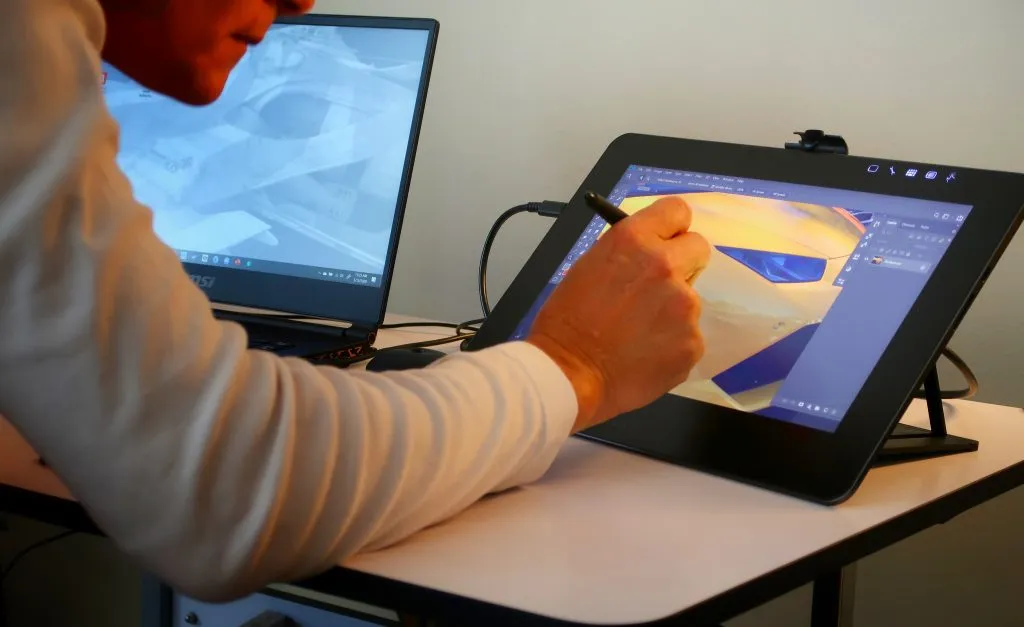 As a recent entrant into the freelance world two years ago after a career of working in VFX studios, I’ll get you my cheat sheet for adjusting to HomeAlone.
As a recent entrant into the freelance world two years ago after a career of working in VFX studios, I’ll get you my cheat sheet for adjusting to HomeAlone.
During the lockdown, it’s easy for an artist to feel out of touch. As much time as they spend alone creating, there’s a feeling of comraderie that only being in a studio environment can give. From people figuring something out in a piece of software or finaling a shot to having to start over on a model due to a design change, to the quirky art next to the coffee machine, the sights and sounds of a studio are rich and give one the feeling of being a viable part of a forward-moving community.
This set of steps will help give you ideas on how to figure out what those things are that you really like in your studio setting and recreate them in your homes getting rid of the stuff you don’t like in your pre-covid office worlds.
1. Comfort
This is the overarching point for everything that follows. What exactly is comfort when you sit in front of a screen all day? We’re built to be outside, hunt, gather, climb, ride a bike, breathe fresh air. Yet here we are, banging on a keyboard, not moving, in the dark, day after day. I approach the dilemma a few ways. Mentally and physically. We do a ton of thinking and multitasking, and to do that, we have input devices. Mental and physical. To be able to continue this day after day, I take on a “live to fight another day” mentality. This suggests get your work done in the most efficient way while not hurting yourself. I’ve been thru an RSI ordeal when I was younger and it’s a crippler in both the mental and physical categories. I’ve also been unemployed and it’s a crippler in the mental and physical realms. So our goal is to somehow balance these two and be productive. You, my friend, are a digital athlete. The best athletes address the mental and physical and are able to grow. This is how I view my home experience while creating and being productive for income. The following points support an environment that enables me to do just that.

2. Space
Your cockpit, if you will. The desk, the chair, the keyboard, the monitors, the input devices, the shelves. This is the architecture of your comfort “zone.” Initially, my freelance life at home was “make do with what you have.” And, I realized quickly that the people in charge of these things at work did deserve their own division. They try them out, they do research. Guess what…that’s you now. I sat in a rocking chair initially. In front of a small drawing table. That didn’t fit my mousepad. It worked for a month, but it showed after that. I’d go exercise after work and I was stiff…bad posture, etc. the culprit. Work was getting in the way of play, physically. This made me uncomfortable. I’d go to work the next day and not feel like I’d gotten a good workout in the day before and it would affect work. Imbalance. Less productivity. So I invested in a desk $1200 biomorph desk, a $300 office chair, and a $250 second monitor. For less than $2000, I’d bought myself a “foundation” for expansion of my space. Did I need all the toys on my desk that I had when at ILM? No. Was there room? No. So I bought some $30 shelves. You get the idea? You no longer have management telling you that you only have an 8’ cubicle to exist in.
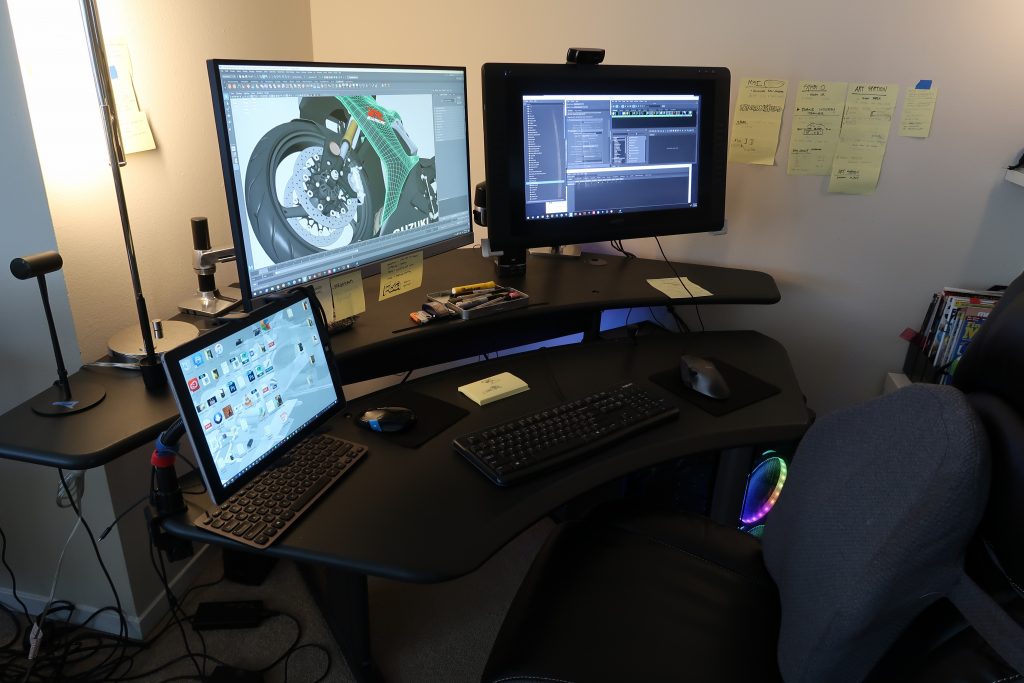
You always deserved more, and now you can explore that. Take your time. A good example of how I’m “feeling out my space” at home vs. being cramped by a studio office happened right away when I started freelancing from home on Dune a few years ago. To lay the groundwork, I’m a big fan of books, and have a sizable library of reference books, some of which are pretty pricey. Putting it mildly, I never had enough room at my desk or even floorspace at work to lay out my reference books as I worked. I keep a lot of books open at once for ideas as I design and try as I might, there wasn’t space. Referencing tons of ships for Star Wars or car and plane parts for Transformers takes space, and I’ve never been one to just have Google open to one or two images. I need a bunch. More than a bunch. And not every neighbour at work wants to see all those books on the floor. To each his own, but you kind of have to respect that. My neighbour might want to be Captain Minimalist and they will NOT enjoy my methods. It’s proven.
At home on Dune, I set up a table next to my computer and tried to make it work, but it wasn’t big enough. I just spread my books all over the floor. A very messy yet clear and understandable hierarchy of information that I knew wouldn’t be moved by a cleaning crew or “borrowed” when I got to work the next day. If it got too messy, I put the books I wasn’t using as much on my shelves and cycled new books in as the design problem changed in the middle of the day. No more “Oh, I have that book at home…I’ll bring it in tomorrow.” It’s a “now” thing. I managed it, and it worked for me. As a result, my workspace stays fluid. Each project has unique demands. You can’t always guess where a project will go, but you can be prepared space-wise by not being locked into an 8×8 cubicle. Just get the fundamentals mentioned above and you’ll grow and adjust. You are your Facilities Manager now. Congratulations!

3. Sights
Ah, the beautiful Artemedie lights at ILM. Man, those were great. So elegant. And so expensive. And you were allotted one. So I hacked other lights in there. And it never was perfect. Because I sat near a window and I didn’t like the glare. Conundrum. Work from home?…no problem! We do tasks and task lighting is what we need. I use a few desklamps with dimmers, shine them on a wall for ambient light, turn them to my desk when I sketch. And there’s no Facility Manager saying “these are not approved by our dept. for power consumption, etc.”. You, again, get to be the boss. Decide what you like and don’t like or need. As for those toys, move the shelves around. See what you like. Maybe you like them across the room. That Jaws poster you always wanted to hang on your wall at work, you can now, because it’s not a push-pin cubicle wall. Take advantage of the options you didn’t have at the Office.
4. Sounds
I play movies all day long. I put football games on. I put on music. I don’t actively participate in any of them. It’s background. I call them “ambient anythings.” They give me an idea of how much time has passed. You know the crank…it can go long and all of a sudden you’re 5 hours into what you thought was 2. Great with no time constraints, but I have time constraints. These things help me, headphone free. I can hear cars outside, and the hum of my machines. I don’t feel like I’m claiming privacy like I did at the Office by slamming my earphones on and essentially saying “leave me alone.” The cost of a really good set of speakers and an excellent TV has plummeted since I started in this industry. And you can write them off. All of the “purchases” I mention, they’re tax write-offs. Save your receipts.
5. Smells
Plants are good for you. Buy a few. The companies I worked for wouldn’t let us have them, I guess for insects or some other quirky rule. I’m not a big plant guy, but having greenery around, even in another room, helps separate church and state at work. Like to aerate smells like mint or citrus or the millions of other oils you can get at a supermarket?…you can now. It can really make the difference when Photoshop crashes on you and your machine restarts. I was surprised at my reaction. Couldn’t do that at the office…yet another opportunity.

6. Stretches and Segways
Working at home makes it easier to not take breaks, even though you have your whole apt/house to go to and do it. We’re programmed to sit still and work. Not take care of ourselves. It’s a reactive company thing, and no doubt attached to Workers’ Comp when that care shows up. You’re your own Human Resources Manager now. Congratulations! Pop onto the floor whenever you like and stretch your back. Stretch your forearms from typing. Go into another room and stretch your hamstrings. Keep your body happy so that when the bell rings at 5pm (or whenever your day ends) you’re ready for play. I walk, climb, ride motorcycles. I need to be limber for all of them. Keep that in the back of your mind during your day. Let the reward of playing after your workday drive those stretches. Human Resources won’t mind. I promise.

7. Spending
One of the silver linings of the lockdown for me is that I’m learning not to spend frivolously. I don’t go out to eat as much, obviously, and I don’t go to stores. As much as Amazon would like me to spend, I only use them as an emergency. I’m saving money, somehow, by default. The bills keep coming, but they always would. It’s the splurge spending on those pesky toys to put on the shelves in my work area that’s really ground to a halt. As it turns out, I have enough. And with bookstores closed, perusing cool books has dropped off the face of the earth, even though it was fun. The impulse buy has died a bit, and if I do…drumroll…it’s to better my work area at home. A better UPS, a better mouse, a new Cintiq. Again, tax write-offs. You’ve got a new Account Manager role, too!
8. Software
You may have access to your company’s software as you work from home. That’s awesome! But if you don’t, it might be time to try out some 30-day trials to hone some skills. I do it all the time. Nothing helps me stay and feel relevant like trying out “popular” software. On one of your rest-days from working out after work, download a trial and hit youtube for a quick beginner’s tutorial. I’m always surprised at how much good information is out there for training that’s free. Paid tuts go one step further, and tend to be longer. Well worth the money, if you have the software to learn on. Spend 2 hours on it, and you will feel refreshed and oddly re-validated in today’s software-fashion world. Some recent trials I’ve messed around with are 3DCoat, Fusion360, and Blender, in which the package is free! I have a big list that I need to sniff around in, too. There’s no obligation on the trials, and it’ll break the stagnation of being in the same software day-in/day-out. And you’re growing! You’re your own IT department now! Yet again, I offer my congratulations to you. You’re really a one-person company.
9. Socializing
It’s tough, no doubt. That said, I was on a Zoom call with some buddies from ILM the other night and we had a blast. They scheduled it for a Friday night and people from both US coasts were on. It was memorable. I miss that water cooler talk. I didn’t know it, but I did. So, if you have a few people you get along with well who are in your same boat industry-wise, see if you can set up a 30-minute meet up. Technical support, gossip, hobbies, all the stuff that happened in the kitchen at work can happen there. It’ll be awkward at first, but if you give it a chance, you’ll feel the benefits of a group setting. Zoom or Skype or whatever is here to stay, now that this lockdown’s hit, so you may as well start kicking it’s tires hard and who better to do it with than friends?
[wbcr_html_snippet id=”25411″ title=”Wacom Tablets”]
